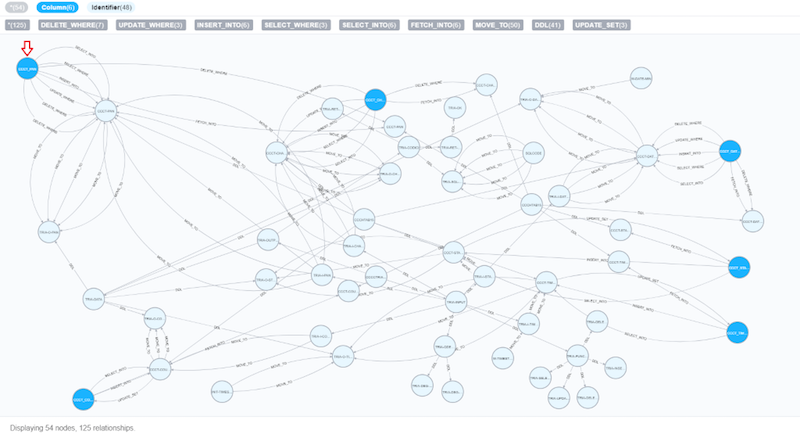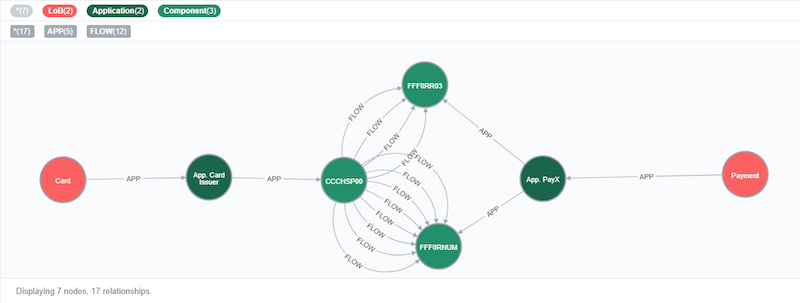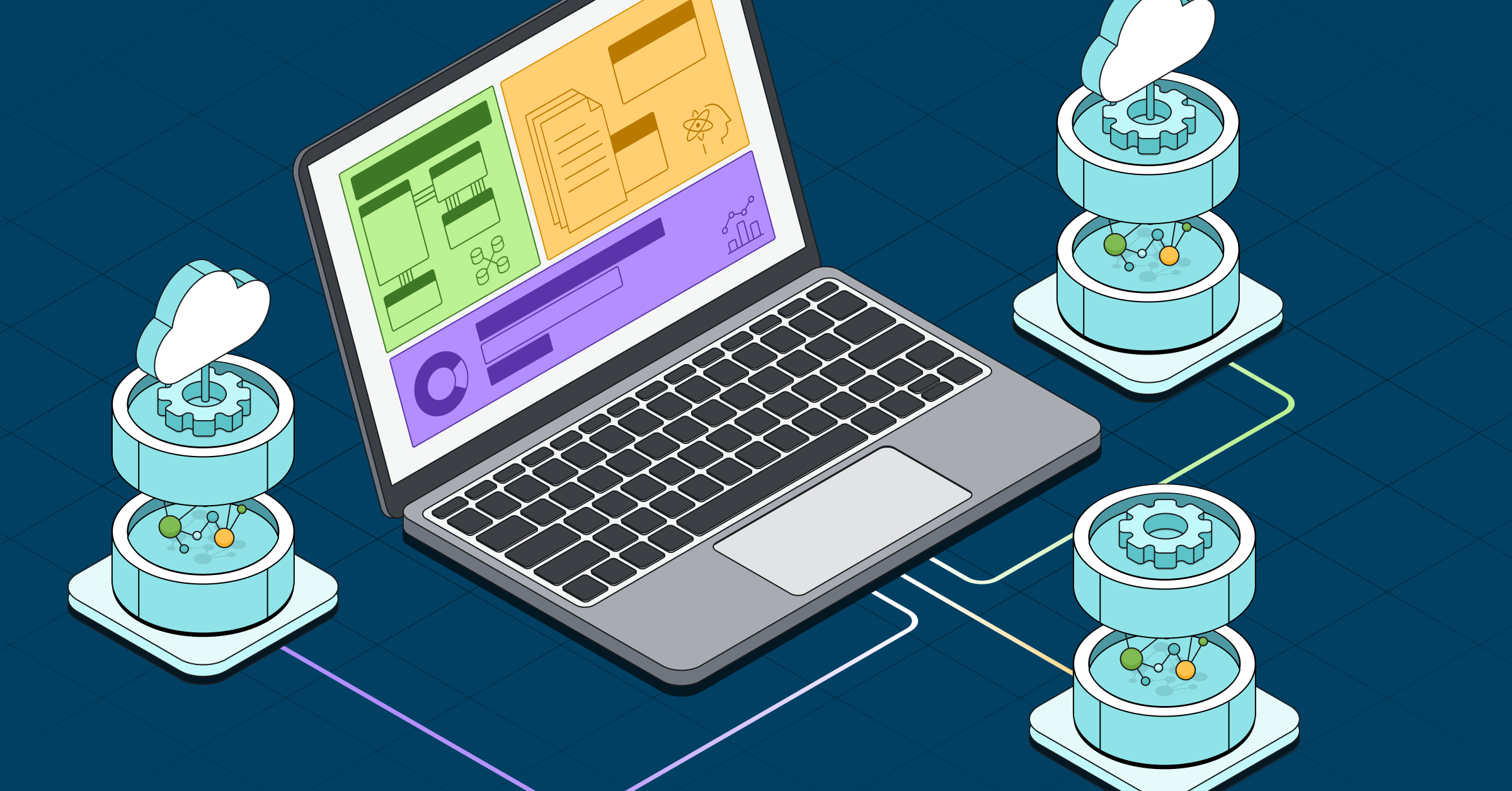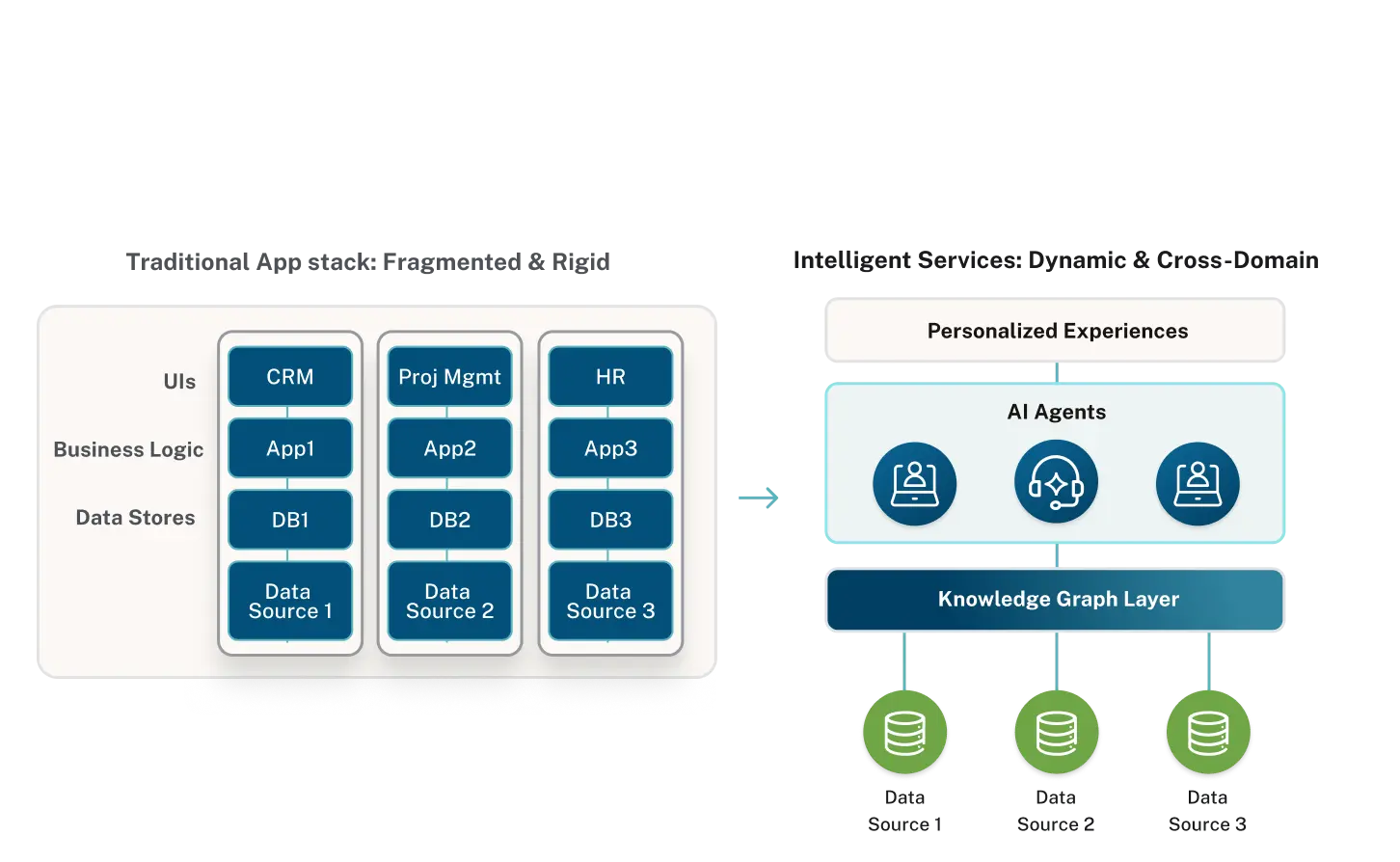KeneteK & LARUS Announce a New Graph Partnership
6 min read

In 2018, it’s been estimated that 80% of financial transactions still pass through a mainframe application, and in most enterprises, a mainframe app is still the center of most data propagation.
This stat alone means companies struggle to find a concrete starting point for effectively tackling environment solicitations and achieve true digital transformation. They need tools and services that help them create a business and IT environment where both new and legacy tools work in harmony without worries.
This is where KeneteK and LARUS come in.
During a Neo4j meeting, Kenetek and LARUS finally understood the power of Neo4j in linking together their world of consulting and developing – and revealing new perspectives thanks to graphs.
Announcing a New Partnership Between KeneteK & LARUS
KeneteK
and LARUS – our first Italian partner since 2014 – have come together to deliver an even more complete offering. By perfectly joining the years-long expertise of both KeneteK and LARUS, their combined solutions are truly one of a kind.
KeneteK has strong capabilities in analyzing and capturing the knowledge of complex systems (read more below). LARUS runs several big projects all over the world. Both companies join their capabilities of leveraging the true power of graph databases to tackle complex digital transformation projects. By reducing years of work to a fraction of the time, they work to reduce project risks to nearly zero.
The objective of their partnership is to bring local and global companies up to date and help them be an example for other companies all around the world.
How KeneteK Discovered Neo4j
Initially KeneteK’s tools stored the XML representation of the analyzed components in a traditional RDBMS – specifically Microsoft SQL Server.
When it came to simple queries and the navigation of single components, a relational database worked just fine. But when the need arose to go beyond the single component and into an entire business process, the RDBMS made the loading of certain views complicated, time consuming or flat-out impossible.
The 2D structure of the database, and the hierarchical dependencies imposed by the XML, meant that a representation of the table field propagation throughout an entire business process required a huge amount of logic and code, both in the SPs and in the code behind the presentation application.
After a lot of research, KeneteK found Neo4j and the graph data model, which opened up an entirely new world by providing the tool they were looking for to properly represent business processes and data flow. Thanks to Neo4j, they now represent the data inside of applications as nodes, connect them to logic/verb nodes and relate them to other data nodes depending on the particular COBOL statement.
This means that now, to obtain the data propagation of a field inside of an entire business process, they execute a simple Cypher query that returns the entire data structure without needing complex logic on the backend of their applications.
Also, the effort and time needed to complete every part of the analysis is drastically reduced to a point that an entire phase of processing that was needed before – when using a RDBMS, as the analysis that needed the whole picture to be performed – can be skipped and the knowledge of the complex systems grows whilst analyzing the various components that make it up.
The key factor that makes Neo4j the solution to their scenario is that the graph model does not have any structural constraint, meaning nodes can be added to the database without upsetting any of the dependencies that the RDBMS imposed. This means that instead of having information about single components (such as a node), the user has the knowledge that is unlocked by the relationships that naturally form between every node.
Example: How KeneteK Uses Neo4j
The use of Neo4j, as mentioned above, opens incredible possibilities for making the true knowledge and data contained in mainframe applications to emerge.
Below for example KenteK can use a simple Cypher query to find how the data from an SQL Table Column is propagated inside of a system. By starting from the Column node we can graphically see how the data is passed to other Identifiers (COBOL program variables) and Columns and, most importantly what COBOL statements connect these nodes, highlighting not just the propagation itself but the logic involved in said propagation.
// Extract a Column CCCT_PAN propagation from a specific Environment
MATCH (w:Column{name:'CCCT_PAN',env:'XX'})
CALL apoc.path.subgraphAll(w,{labelFilter:'+Identifier|+Column'}) YIELD nodes, relationships
RETURN nodes, relationships
The graph that is generated is not limited to representing data flows; in fact, KeneteK can use the same one to find applications that call other applications outside of their line of business perimeter.
Again, with a simple Cypher query we can see how the COBOL component “CCCHSP00” calls applications that are part of an other line of business, knocking down the barriers of the silos inside of modern organizations and connecting their components.
// Find the cross-silo calls of the component CCCHSP00.
MATCH (lobI:LoB)-[:APP]->(appI:Application)-[:APP]->(cmp:Component{name:'CCCHSP00',env:'XX'})-[:FLOW*0..3]->(wu:Component)<-[:APP]-(appO:Application)<-[:APP]-(lobO:LoB)
RETURN lobI, appI, cmp, wu, appO, lobO
The beautiful thing about the graph is, when paired with an adequate model, it can be used to connect not just technical components but something much more interesting and at times a lot harder to connect – people with different backgrounds and business culture.
By connecting the graphical representation of applications and data created with master data vocabulary nodes, KeneteK is used by both the IT and the business by giving them information they can understand and, more importantly, are interested in and need. In this example, we can see what SQL columns are found to be PAN Primary Account Number columns.
// Extract the columns that are categorized as PAN
MATCH (t:Thesaurus)-[:MASTER]->(b:BMD)-[:MASTER]->(m:Master{name:'PAN'})-[:CLM]->(clm:Column{env:'XX'})
RETURN t, b, m, clm
More About Kenetek
KeneteK is a company based in Miami (FL) with over 25 years of experience in the field of knowledge management, data and application analysis, and the implementation of innovative products and services.
Today their mission is to aid their customers in reaching their business’s digital maturity. KeneteK is continuously developing its applications and searching for the best products to incorporate into its offerings, hence the integration of Neo4j in its most recent release of products. KeneteK particularly aims to help enterprise customers that have a complex IT software environment, especially mainframe systems.
KeneteK uses its proprietary products to analyze the source code of applications in a static form and create a representation of said application in XML and in a graph model, developed in conjunction with the experts at Neo4j. This approach results in an Agile Holistic Data Hub, unlocking huge possibilities for the customer’s business.
Here is a list of some examples:
- The customer has a complete and holistic view of its business processes, knocking down the barriers of the silos which afflict the homogenic development of businesses today.
- The customer has a true knowledge of what logic is encapsulated in the analyzed business processes, enabling an effective and efficient use of this information.
- Thanks to the automation of this analysis the customer responds to external solicitations (customer requirements, regulations, cyber threats, etc.) in a timely manner without needing to interrupt vital product lines.
- The customer expects a reduction of time in the delivery of results of up to 300 times compared to traditional approaches (see KeneteK PCI-DSS Mask Pan case study).
- The people in projects that involve the analyzed applications access the knowledge base to get information their role needs, finally business and IT can speak a common language.
- There are many more benefits depending on the customer’s scenario. The sky’s the limit once you unlock the knowledge.
What sets KeneteK apart from its competition is their team of developers have focused on developing these products to analyze the core legacy systems of extremely complex businesses – such as financial institutions, telecommunication companies, insurance companies, airlines, etc. – and have created very efficient and effective parsers to perform the above mentioned analysis in the mainframe environment.
At KeneteK, we chose to focus on mainframe environments because – as we stated earlier – 80% of financial transactions still pass through a mainframe application. In most enterprises, a mainframe app is still the center of most data propagation. This doesn’t mean we don’t support other languages or software; if needed, the data from a third-party parser can be included in the Holistic Data Hub and it can be imported using customized ETLs.














